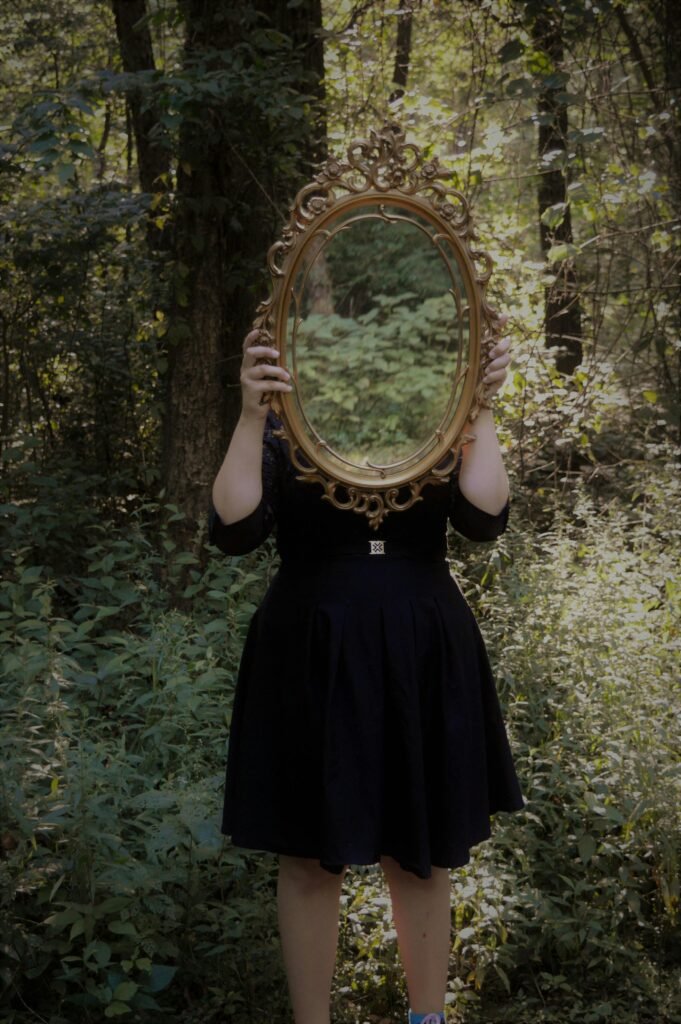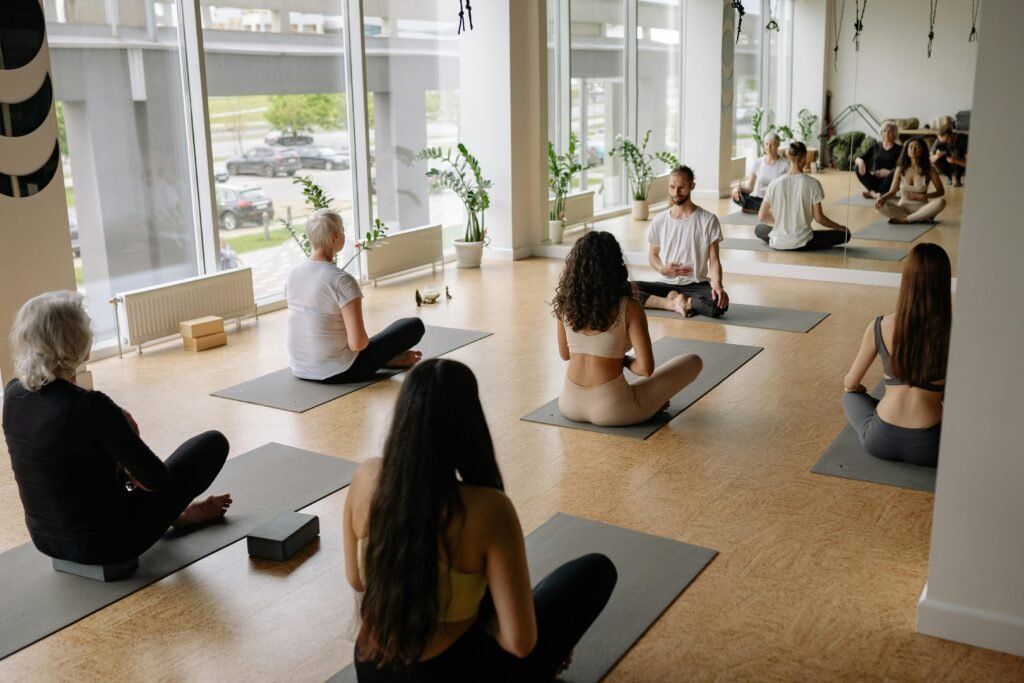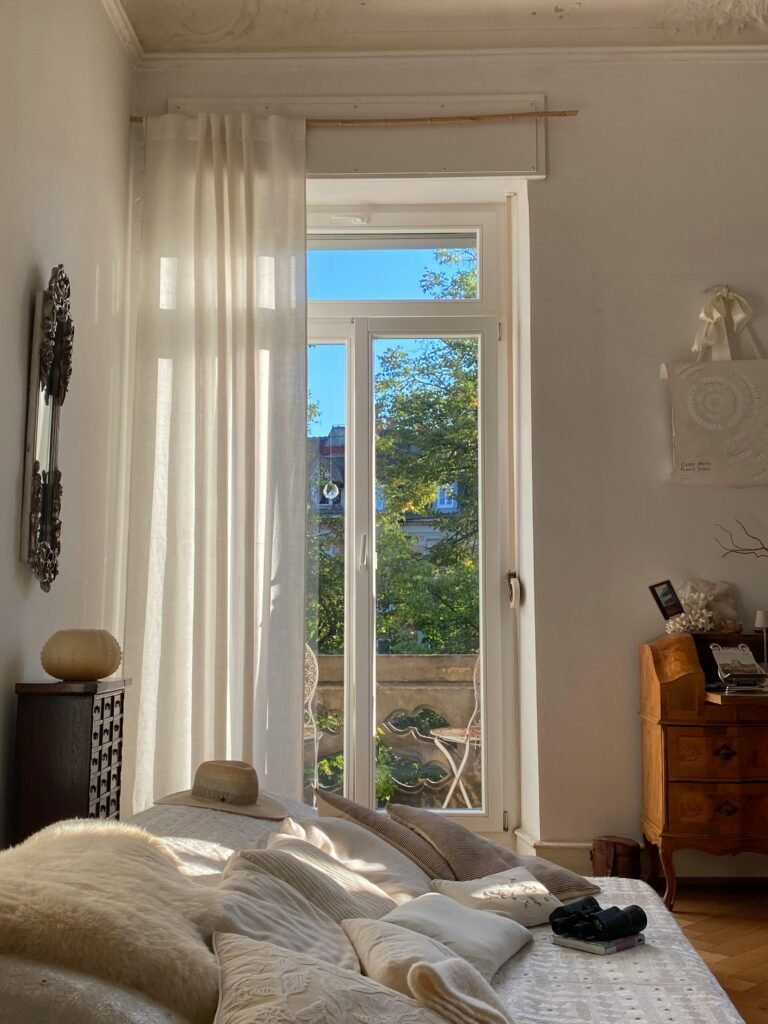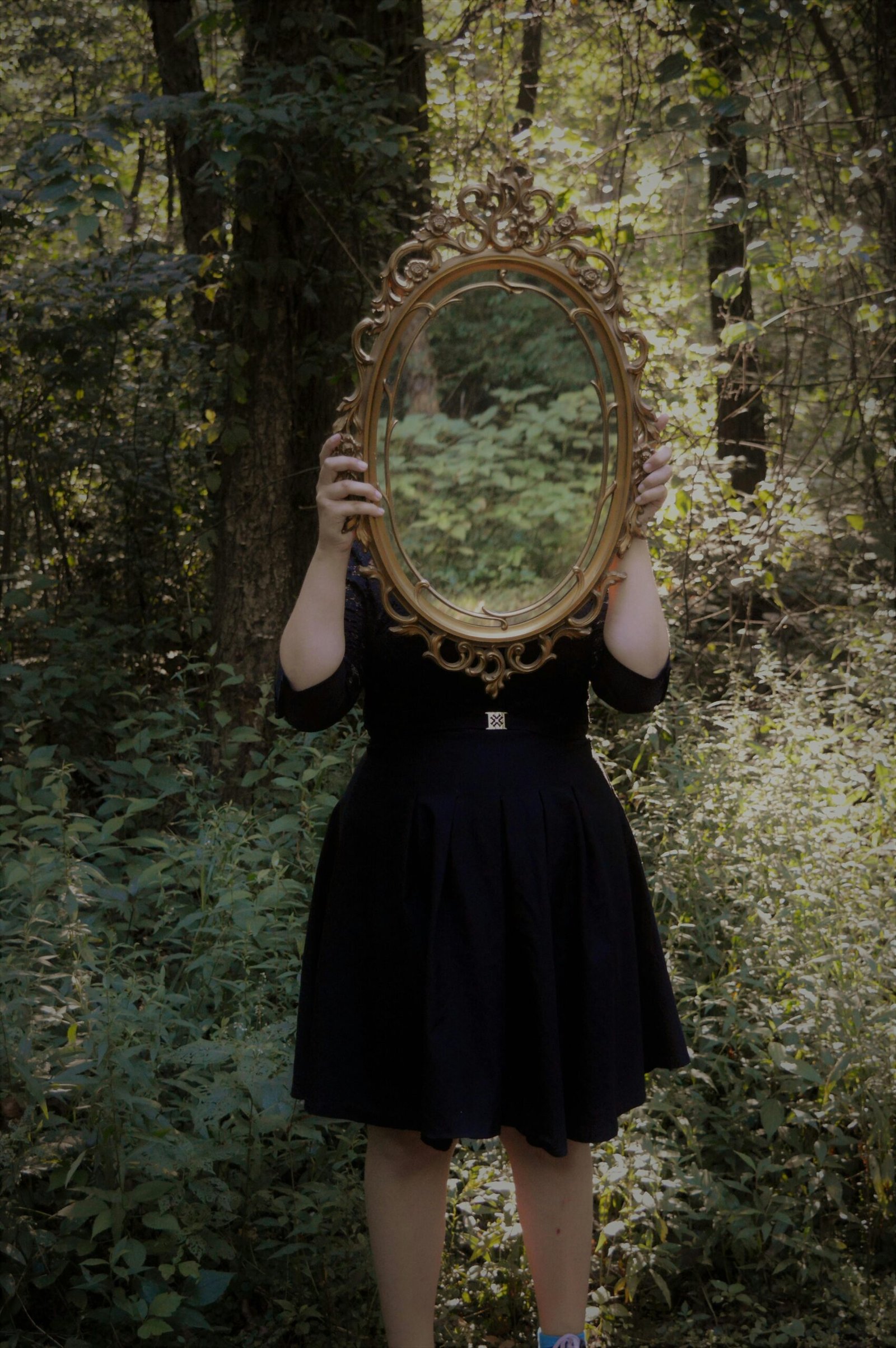Want to make your home feel larger and brighter without construction or a big budget?
How Can I Use Mirrors To Make My Home Look Bigger?
Mirrors are one of the most effective and affordable tools you can use to change how space feels. When placed thoughtfully, they reflect light, create a sense of depth, and multiply focal points so rooms appear more open and airy. This guide explains how to use mirrors strategically in every room, what types to choose, placement rules, styling tips, and common mistakes to avoid.
Why Mirrors Change Perception of Space
You see more than a surface when you look into a mirror — your brain interprets reflected space as an extension of the room. Mirrors bounce both natural and artificial light, increasing overall brightness and visually pushing back walls. They also reflect interesting views, which distracts the eye from small dimensions and creates a sense of spatial continuity. Understanding these basic principles helps you decide where and what kinds of mirrors to use.
The science behind reflection and perceived space
Light that bounces off a mirror preserves color and detail, making reflected areas feel like real continuations of a room. This visual cue tells your brain there’s more space beyond the reflective surface. Mirrors also reduce contrast by illuminating dark corners, which prevents cramped feelings caused by heavy shadowing.
How light and mirrors work together
A mirror that reflects a window or a light source amplifies brightness by redirecting rays into the room. Even a modest mirror opposite a small window can nearly double perceived illumination in certain spots. Combine mirrors with layered lighting (ambient, task, accent) to maximize the effect.

Choosing the Right Mirror Type for Your Space
Different mirror styles produce different effects. Choosing the right type depends on the size of the room, the style you want, and practical concerns like durability and humidity exposure. Here are common types and what they do for space.
Full-length and floor mirrors
Full-length mirrors create the illusion of extra height and depth. Placing one against a wall or leaning it creates an expanded vertical plane that is especially effective in narrow rooms or behind furniture. They’re a dramatic, functional choice that instantly opens up a space.
Wall-mounted and oversized mirrors
A large wall-mounted mirror can act like a window into another room. Oversized mirrors work best on a main wall where they reflect a wide area — for example, across from a living room window or a dining area. These provide the most dramatic increase in perceived space.
Mirrored panels and mirrored walls
Mirrored panels or a mirrored wall give near-seamless reflection that greatly increases depth. They work well in dining rooms, hallways, and even small bathrooms. Use them with care — a fully mirrored wall can feel like a design statement and may require consideration of what it will reflect.
Mirrored furniture and accents
Mirrored furniture — such as coffee tables, consoles, or cabinet doors — introduces reflective surfaces at different heights and breaks up solid massy pieces. Small mirrored accents can add sparkle and visual interest without dominating the room.
Accent mirrors and collections
A curated arrangement of smaller mirrors in varying shapes creates movement and interest. Grouped mirrors can be playful while still enlarging a space. Use consistent spacing and a cohesive theme to prevent a cluttered look.
Convex and decorative mirrors
Convex mirrors bulge outward and capture a wider field of view, making them useful in very small rooms or hallways where standard mirrors might be awkward. Decorative mirrors with shapes or ornate frames add personality while reflecting light and views.
Where to Place Mirrors: Practical Rules
Strategic placement is everything. Use these practical rules to position mirrors for maximum gain.
Opposite windows
Placing a mirror opposite a window reflects the outside view and doubles natural light. This placement brightens the room and gives the illusion of a second window. Even a small mirror across from a window can make a big difference.
Adjacent to light sources
Mirrors beside lamps, chandeliers, or wall sconces multiply the light from those fixtures. This is especially useful in rooms with limited natural light. Position mirrors to catch both natural and artificial light for balanced brightness.
At the end of hallways
Mounting a mirror at the end of a hallway creates the impression that the corridor continues. This trick visually shortens the hallway’s dead end feel and invites the eye forward.
Above furniture
Mirrors placed above sofas, consoles, and mantels expand the wall space and reflect the room’s activity. Make sure mirrors are scaled to the furniture; a mirror that’s too small will look lost, while too large can overwhelm.
Behind focal points
Putting a mirror behind a focal point, such as a dining table centerpiece, a fireplace, or a plant, amplifies that element and adds depth. The reflection doubles the visual interest and makes the space feel richer.
Angled mirrors for tricky spaces
Leaning or angling a mirror can capture a preferred view (a window, artwork, or garden) when placing a mirror flat is not possible. A slight tilt toward the source of light or scenery maximizes the reflected content.

Mirror Size, Proportion, and Framing
Size and scale matter as much as placement. A badly scaled mirror can make a room feel awkward instead of larger.
Proportion rules
As a general rule, a mirror should be roughly two-thirds the width of the furniture beneath it (e.g., a mirror above a sofa or console). For full-height effects, select floor-to-ceiling or large wall mirrors that anchor the wall without overpowering it. Maintain proportional balance with surrounding furnishings.
Frame choices and effects
Frames can either emphasize or soften a mirror’s impact. Thin, minimal frames or frameless mirrors create a clean, expanded illusion. Ornate or thick frames draw attention to the mirror as an object and can reduce the visual opening — choose frames that match your design goals. Metallic frames reflect light subtly, while wooden frames add warmth.
Edge treatments and beveling
Beveled edges add a refined highlight and catch light differently than flat-cut glass. Mirrored tiles with polished edges provide a mosaic effect for accent walls or backsplashes. Consider edge treatments to refine the mirror’s visual role.
Styling Mirrors: How to Arrange and Layer
Styling determines whether mirrors will feel intentional or accidental. Use arrangement strategies to create cohesion and impact.
Single statement mirror
One large mirror on a dominant wall is a powerful statement. It should be centered and proportionate to the wall’s dimensions. This approach suits living rooms, dining spaces, and large halls.
Grid or panel arrangement
A grid of identical mirrors or mirrored panels produces architectural rhythm and works well in modern interiors. Grids can cover partial walls and are visually neat and symmetrical.
Gallery-style grouping
Mix mirrors of different shapes and frames like a gallery wall. This feels eclectic and lively, particularly in a hallway or above a console. Keep a consistent spacing (e.g., 2–4 inches) for a cohesive look.
Layering with art and plants
Place a mirror behind a piece of art, a plant, or a lamp to create depth layers. The mirror should reflect elements that add texture and color rather than clutter.
Mirrored clusters for accent
Cluster small mirrors near a light source or a focal element for a sparkling accent. Clusters are easy to change and can adapt to seasonal styling or room reconfigurations.

Room-by-Room Mirror Strategies
Every room has unique needs. The following suggestions give you practical application ideas for typical spaces.
Living room
A large mirror above the sofa or on a wall opposite windows increases perceived space and brightness. Leaning floor mirrors in corners open vertical lines and reflect more of the ceiling, which enhances height. For small living rooms, a horizontal mirror above the sofa widens the visual field.
Dining room
Place a mirror along a dining room wall to reflect the table and chandelier, which doubles the sense of space and makes the room feel more formal and airy. Mirrored panels behind a buffet create depth and showcase decorative pieces.
Bedroom
Full-length mirrors are essential for bedrooms and can make the room feel taller. A mirror across from a window or on a closet door enlarges the space. Avoid placing mirrors directly facing the bed if you prefer a more restful atmosphere.
Bathroom
Mirrors are both functional and space-enhancing here. Large vanity mirrors stretch the room visually. For small bathrooms, an oversized mirror on one wall can make the space feel twice as big. Ensure mirrors are rated for humid environments, or frame them with moisture-resistant materials.
Hallway and entry
Narrow hallways benefit from mirrors at the end or along one side. An entryway mirror over a console provides a last-minute check and brightens the space. Use a low-profile frame to prevent a bulky feel.
Kitchen
A mirrored backsplash can reflect countertops and light, but remember it will show splatters and require cleaning. Alternative: consider mirrored upper cabinet doors for a modern effect that opens the kitchen sightlines.
Closet and dressing area
Sliding mirror doors or a full-length mirror inside the closet creates depth and makes it easier to get dressed. A well-placed mirror here also reduces the need for additional furniture.
Small studio or apartment
Strategically place an oversized mirror where it reflects the largest possible area (living bed area, window, or artwork). Mirrors that visually separate zones can make a studio feel less cramped.
Table: Quick Room Recommendations
| Room | Best Mirror Type | Placement Tips | Expected Effect |
|---|---|---|---|
| Living Room | Oversized wall or leaning floor mirror | Opposite windows or above sofa | Brightens, adds depth and height |
| Dining Room | Mirrored panels or large horizontal mirror | Along dining wall or behind buffet | Doubles light and focal points |
| Bedroom | Full-length or wardrobe mirrors | On closet doors or a freestanding mirror | Increases height and functional use |
| Bathroom | Large vanity mirror or full wall mirror | Above sink or full wall | Makes compact bathrooms feel larger |
| Hallway/Entry | Medium mirror or gallery of small mirrors | At end of hallway or above console | Extends corridors, brightens entry |
| Kitchen | Mirrored backsplash or cabinet doors | Behind stove or countertop | Reflects light and counter activity |
| Small Studio | Extra-large floor or wall mirror | Facing main living/bed area | Creates sense of more square footage |
Practical Installation Tips
Installation affects both safety and visual success. Follow these practical tips when mounting or leaning mirrors.
Height and sight lines
Hang mirrors so that the center sits at about eye level (typically 57–65 inches from the floor), unless it’s a deliberate tall or low piece. Adjust based on average heights of household members and nearby furniture.
Secure mounting
Use wall anchors, mirror clips, or french cleats for heavy mirrors. Ensure studs or proper anchors are used to keep large mirrors from falling. For leaning mirrors, use floor stops and consider anchoring to the wall to prevent tipping.
Avoid reflected clutter
Position mirrors to reflect pleasant scenes: windows, artwork, plants, or open space. Avoid reflecting messy areas, closets, or clutter-prone surfaces that will make the space feel busier.
Safety and glass choice
Tempered glass is safer in high-traffic areas or where breakage is a concern. For bathrooms or kitchens, consider moisture-resistant frames and sealants to prevent warping or rust.
Maintenance and Cleaning
A clean mirror looks bigger than a smudged one. Regular maintenance keeps your reflective surfaces effective and attractive.
Best cleaning methods
Use a microfiber cloth and a gentle glass cleaner or a mix of water and vinegar. Wipe in an S-shaped motion to prevent streaks. For frames, dust regularly and use appropriate cleaners for wood, metal, or painted finishes.
Preventing moisture damage
In bathrooms, ensure good ventilation and wipe frames regularly. Use mildew-resistant framing materials and consider an anti-fog treatment for steamy situations.
Repair and replacement tips
Small chips can be filled by professionals, but severe damage usually means replacement. For antique or decorative mirrors, consult a restoration specialist to preserve value.
Common Mistakes and How to Avoid Them
Mirrors can backfire if used carelessly. Avoid these common errors.
Placing mirrors to reflect clutter
If a mirror constantly reflects a messy kitchen counter or a jumble of clothes, it increases visual chaos. Instead, reposition the mirror to reflect a tidy area or a source of light.
Overdoing mirrored surfaces
Too many mirrors can create a hall-of-mirrors effect that feels overwhelming. Keep balance with matte textures and non-reflective elements like textiles and wood.
Incorrect scale
A tiny mirror on a large wall looks lost; a huge mirror on a small feature can dominate. Choose scale based on surrounding furniture and wall proportions.
Misplaced focal reflections
Don’t place mirrors where they awkwardly reflect lines, fixtures, or eye-level obstructions. Take time to stand in different parts of the room to check the reflected view before hanging.
Budget and DIY Options
You don’t need to spend a fortune to get good results. Several budget options and DIY strategies can create a big impact.
Affordable buys
Look for large frames during sales, vintage shop finds, or ready-made oversized mirrors from mass retailers. Mirrored acrylic panels are lighter and cheaper than glass for some applications.
DIY mirrored panels
You can create a mirrored panel wall using smaller mirror tiles or mirrored adhesive films applied to plywood backing. Use grout or decorative strips between tiles for a finished look. This is ideal for accent walls or small sections.
Reframing and painting
Update a thrift-store mirror with a new frame, or paint an old frame metallic or muted for a refreshed look. Reframing lets you control the style at a fraction of the cost of buying a new oversized mirror.
Combining Mirrors with Other Design Tricks
Mirrors are most effective when combined with other strategies that enlarge perceived space.
Use with color and texture
Light, neutral colors and reflective surfaces complement mirrors. Keep large furniture low and choose slimline silhouettes to reduce visual bulk. Textures like linens and rattan add warmth and counterbalance reflections.
Lighting strategies
Combine mirrored placement with layered lighting — ceiling fixtures, wall sconces, and table lamps — to increase depth and eliminate harsh shadows. Accent lighting behind or around mirrors adds glow and dimension.
Furniture placement and negative space
Pull furniture slightly away from walls and leave open negative space to let mirrors reflect more of the room. Low-profile furniture prevents reflections from feeling chopped or fragmented.
Advanced Techniques and Creative Ideas
If you want to push creativity further, try these advanced mirror uses to create architectural interest.
Mirrored ceilings and partial ceilings
Mirrored ceiling panels can increase perceived height and drama in an otherwise low space. Use sparingly to avoid a busy effect — partial mirrored ceilings over seating or dining areas can be particularly effective.
Mirrored room dividers
A free-standing mirrored screen can act as a room divider that visually separates zones without blocking light. This is great for studios or large open spaces where you want delineation without sacrificing openness.
Backlit mirrors and LED framing
Backlit mirrors produce a halo effect that floats the mirror off the wall, adding depth and a soft glow. LED perimeter lighting around a mirror is both functional and visually expanding.
Mirrored cabinetry and shelving
Reflected cabinet or shelf faces add depth to kitchens, bathrooms, and storage areas. Use mostly mirrored surfaces at eye level rather than on low, touch-prone surfaces to minimize maintenance.
Final Checklist Before You Hang a Mirror
Before you commit to hanging, run through this quick checklist so the mirror works as intended.
- Have you tested the reflected view from principal seating points?
- Is the mirror proportionate to the wall and furniture?
- Will the mirror reflect clutter or undesirable views?
- Is the mounting hardware rated for the mirror’s weight?
- Is the mirror placed to maximize natural and artificial light?
- Have you considered humidity and safety for the chosen location?
Conclusion
You can significantly change how your home feels with simple mirror strategies: reflecting light, extending sightlines, and multiplying focal points. With thoughtful selection, careful placement, and a few supportive design choices (lighting, color, and furniture arrangement), mirrors can make rooms feel larger, brighter, and more welcoming. Use the principles and practical tips above to plan mirror placement room by room, and remember that scale, proportion, and what the mirror reflects matter most for achieving an effective illusion of space.
